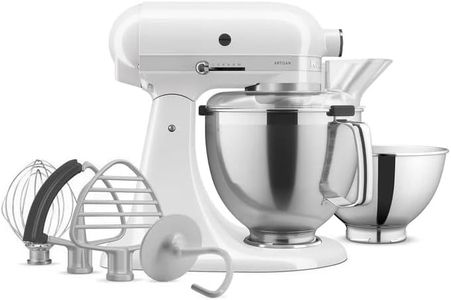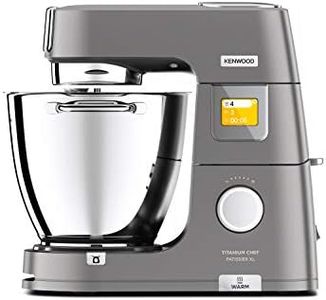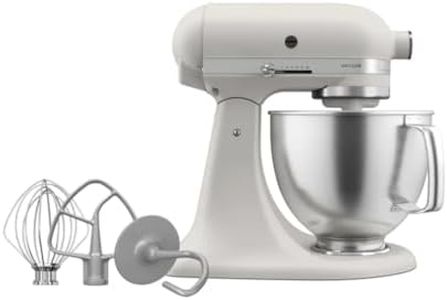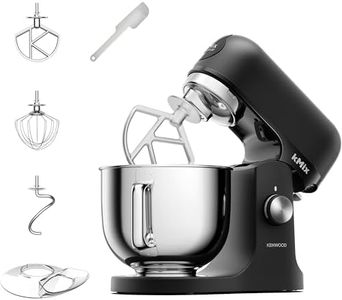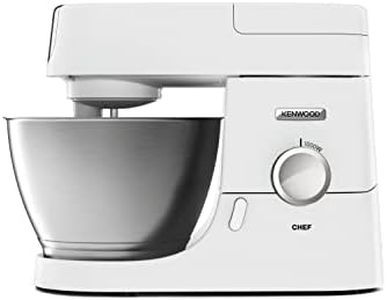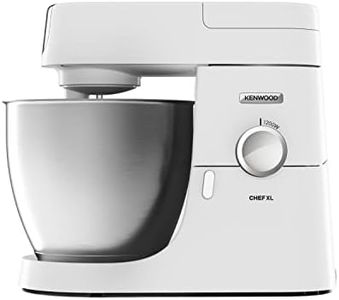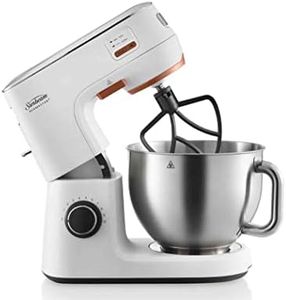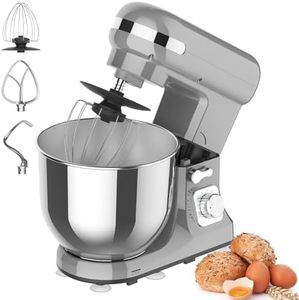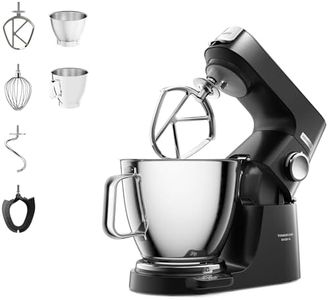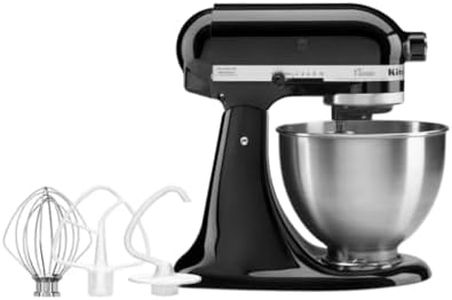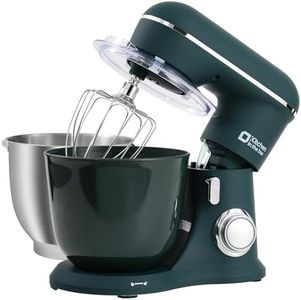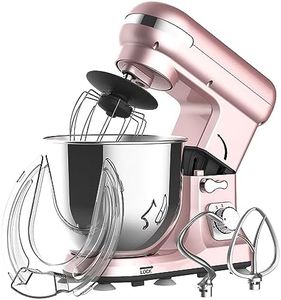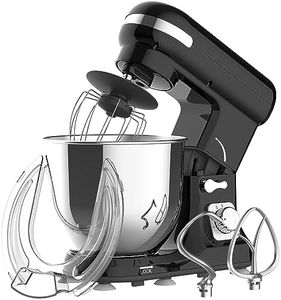We Use CookiesWe use cookies to enhance the security, performance,
functionality and for analytical and promotional activities. By continuing to browse this site you
are agreeing to our privacy policy
10 Best Kitchen Stand Mixer
From leading brands and best sellers available on the web.Buying Guide for the Best Kitchen Stand Mixer
Choosing the right kitchen stand mixer can make baking and cooking much more enjoyable and efficient. Before making your decision, think about what types of recipes you'll use it for most often, how much space you have in your kitchen, and how often you will need it. A good stand mixer should meet your mixing needs, fit well in your kitchen, and last for years without trouble.Bowl CapacityBowl capacity refers to the amount of ingredients the mixer bowl can hold, usually measured in liters or quarts. This is important because it affects how much dough or batter you can prepare in one batch. Smaller bowls, usually between 3-4 quarts, are ideal for those who bake occasionally or make small batches like cookies or cakes for a small family. Medium-sized bowls, ranging from 4-6 quarts, are versatile and suitable for regular baking, moderate bread batches, and family-sized meals. Larger bowls, around 6 quarts and above, are best for avid bakers, people who often bake in bulk, or anyone who needs to prepare large quantities at once. Consider how much you usually bake or cook at one time to pick the bowl size that matches your habits.
Motor PowerMotor power, often indicated in watts, tells you how strong the mixer is. This matters because a more powerful motor can handle denser doughs, like bread or pizza, and operate smoothly without straining. Lower-wattage motors (around 200-350 watts) are fine for light batters and soft doughs, while mid-range motors (350-600 watts) handle most home baking tasks, including moderate bread doughs. High-powered motors (over 600 watts) are built for heavy, frequent use and can knead large amounts of dense dough easily. Think about what kinds of mixes you'll make most often—if you love sourdough or pizza, a higher wattage is a safer choice.
Speed SettingsSpeed settings determine how fast the mixer blades or hooks rotate, giving you control over mixing, whisking, or kneading. More speed options mean you can better match the speed to specific tasks, like slow stirring or fast whipping. Basic models may offer just 3-4 speeds suitable for simple tasks, while more advanced mixers often go up to 10 or more speeds for greater precision. If you want versatility or plan to use the mixer for many different recipes, look for more speed options; if you mostly do basic mixing, simpler controls may be sufficient.
Attachments & AccessoriesAttachments include items like dough hooks, beaters, and whisks that come with the mixer, while accessories might include pasta makers or meat grinders that attach to the machine. Having the right attachments increases the usefulness of the mixer for different tasks. Some mixers come with only basic accessories, which works well if you stick to cakes and basic doughs. Others offer a wide variety to handle everything from whipping cream to making pasta or grinding meat. Consider the recipes you want to try and pick a model that either comes with the attachments you’ll use or makes it easy to buy them separately.
Build Quality and WeightBuild quality refers to how sturdy and well-constructed the mixer is, and weight is often a good clue. Heavier mixers, usually with metal bodies, are more stable when mixing thick dough and tend to last longer. Lighter models are easier to move and store but might 'walk' on the countertop or be less durable over time. If you have a dedicated counter space, a heavier and sturdier mixer is great for frequent or heavy-duty use. If you know you’ll be moving it often, a lighter option might be more practical.
Ease of CleaningEase of cleaning depends on whether the bowl and attachments are dishwasher safe and how simple it is to wipe down the mixer itself. The easier it is to take apart and clean, the more likely you’ll use it regularly without hassle. If you value convenience, look for mixers with detachable, dishwasher-safe parts and minimal crevices where food can get stuck.
